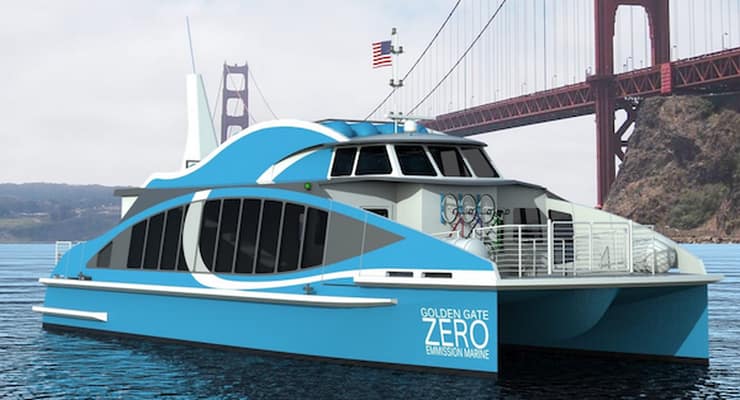Hydrogen is seen by some as a tool to cut carbon emissions… and by others as a decarbonization problem!
Where’s the truth in that? And what does it involve for the (wannabe) hydrogen economy?
Let’s review, and discuss the colorful world of hydrogen.
(You’ll get to love turquoise 😉)
((This deep dive is part of my focus on the Water-Energy Nexus))
Table of contents
- Infographic: The Hydrogen Economy, an Opportunity?
- 4 Truths about the Hydrogen Economy, from a Water Industry perspective
- Hydrogen as a Fuel to store excess Wind Energy
- How to separate Hydrogen from Water?
- 6 Colors of more or less carbon-intensive hydrogens
- What is the current state of the hydrogen economy?
- A driver for green growth: the World needs to decarbonize
- How much water would be needed in a Green Hydrogen future?
- How much of the World’s Renewable Energy would a Green Hydrogen Economy consume?
- Is Green Hydrogen a solution? Let’s count the points
- Green Hydrogen as a way to decarbonize… the Hydrogen Economy first!
- What is needed to unleash the Hydrogen Economy?
- Turquoise Hydrogen: a promising decarbonization prospect
- Turquoise Hydrogen as a decarbonization tool for Wastewater Treatment Plants
- Hydrogen Economy and the Water Industry: What did we learn?
Infographic: The Hydrogen Economy, an Opportunity?
Hydrogen-Infographic-FullEnd of last year, BlueTech Research published an Insight Report on the Hydrogen Economy.
Paul O’Callaghan was kind enough to share his team’s work with me. Thanks, Paul!
I expected it to be straightforward! The World needs to decarbonate, Hydrogen is a tool for that, and it’s a convenient way to stock excess renewable energy production.
So electrolysis plants will start popping up everywhere, representing a tremendous business opportunity for the Water Industry.
(you know, you’ll need to feed them some water)
Simple!
Well, simple but…
WRONG!

That story is much more complex and intricate.
Equipped with BlueTech’s report as a precious translation tool, I went down the Rabbit Hole. It took me five months, but here’s what I learned:
4 Truths about the Hydrogen Economy, from a Water Industry perspective
- Hydrogen is a colorful world, and not all colors are born equal.
- Hydrogen is much more controversial than I first thought, and it will never be black or white – we’re back to colors, aren’t we?
- The Hydrogen economy may rather become a nice little side business for the Water Industry than a tidal wave.
- And Hydrogen may surprisingly have a good bond with wastewater treatment.
So buckle up and embark with me: this journey starts in Vienna in 2018.

Hydrogen is in all the discussions: from scholar to conferences through Google
The first time I came across the topic of Hydrogen was indeed during the European Utility Week, and it started from the opening Keynote.
No less than five speakers mentioned it as the future of energy management in a decarbonized world.
A short (oriented) summary of that opening keynote? Here we go:
[Anonymous quote:.] Getting ready for the future, you’re looking at Hydrogen and biomethane…
[Anonymous quote:.] … there will be “Power to Gas” approaches, like Hydrogen for longer-term storage
[Anonymous quote:.] … we’re thinking of clean energy like the production of Hydrogen from wastewater treatment plant sludges
[Anonymous quote:.] … power to Hydrogen is a very promising technology to store excess renewable energy
[Anonymous quote:.] … there will be energy but not in the form of electricity, rather as Hydrogen or biogas
It continued as a red threat throughout the week, with Germany as the recurring example.

Hydrogen as a Fuel to store excess Wind Energy
The pitch was simple: Germany strongly invests in wind farms; you can’t decide when the wind blows, and if it blows at night, you may produce more electricity than you actually consume.
As an energy layman, it’s difficult to realize how complex electricity grid management actually is. That thing is tricky: you need the offer to match demand at any point in time. If not, the frequency of the grid starts to vary. As soon as it exceeds a variation of 0.05 Herz, power plants may start disconnecting, which worsens the problem.
And soon enough, you have a blackout.

So, if you’re Germany, you don’t want your windfarms to shut down your grid just because we’re in the middle of the night.
Hence you have two options: stopping your windmills – but heavily investing in them to stop them when there’s wind may sound weird. Or store that energy.
I know, by now you want to comment with something like: “Oh wonderful, so you never listened in school? You can’t store electricity!”
But, first, how do you know I was a bad pupil? And second: you can actually store electricity, for instance in batteries, but not only. That’s the full concept of “Power-to-X.”
And now, you’re probably asking:
What is “Power-to-X”?
Well, imagine you’re Switzerland.

You have mountains and plenty of pump / electric turbines systems. Whenever there’s too much electricity on the grid, you pump Water up the mountains. And when you’re missing electricity, you let that Water come back down and produce hydroelectricity.
But what if your country is not 70% made of mountains? Well, you need another solution, and that’s where Green Hydrogen kicks in.
“Green” is the color we attribute to Hydrogen when it is produced by the electrolysis of Water using renewable energies.
How to separate Hydrogen from Water?
What we stupidly call “Water” is known by high-end specialists and gurus of all kinds as “Dihydrogen Monoxide.”
Beyond the joke, that name hints at water’s famous composition: H2O.
Hence, it is tempting to split it up to produce Hydrogen and oxygen, which is actually fully doable if we introduce an additional ingredient in the mix: electricity.
When you run an electrical current between an anode and a cathode, submerged in a clean water body, you foster two reactions.
2H2O ➡ O2 + 4H+ + 4e-
4H+ + 4e- ➡ 2H2
You’ll need an electrolyte membrane (PEM) in your system to separate your anode and your cathode, and this will trigger the production of H2 and O2.
This process has a name: electrolysis. And as soon as it is made from renewable energy, the resulting Hydrogen is called “green.”
I warned you: Hydrogen is a colorful world, so let’s maybe pause here for a second and review those colors.
6 Colors of more or less carbon-intensive hydrogens
So we have Green – produced through electrolysis, powered by renewable energy – as we’ve just seen.
But we also have Brown, which is gasified from coal, and Gray produced through steam methane reforming from fossil fuel.
We then have Blue, which is similar to Gray as it is also produced by steam methane reforming from fossil fuel, with the kick that this time, you capture the carbon by-product.
There’s also Purple or Pink, which is this time similar to Green, as it features electrolysis but uses nuclear power as an input instead of renewables.
And finally, you have my personal crush: Turquoise, which is produced through the pyrolysis of Methane.
(I’ll tell you in a minute what I love about that one.)

What is the current state of the hydrogen economy?
For now, we may see a colorful panel of Hydrogens and a promising prospect with the Green one.
Yet if we’re honest:

⬆️ Alena Fargere is Principal at SWEN Capital Partners and co-founder of the first European investment fund dedicated to renewable gases. ⬆️
You’ll get to know her better in this deep dive:
In other words:

⬆️ Paul Martin is a Chemical process development expert and founder of Spitfire Research. ⬆️
You’ll get to know him better in this deep dive:
So you see, we might have many colors to define many shades of Hydrogen, yet if I was to represent them on a graph, it would look like that.

And talking of that tiny little 98.7% section of the graph, there’s something you shall know about it:
So long before upscaling (or not) the Power-to-X approaches, there’s a lot to build in the wannabe-Hydrogen Economy.
A driver for green growth: the World needs to decarbonize
As we know, there’s a strong driver for that: if we still want to have a planet to live on in the future, we need to decarbonize
And Hydrogen is always addressed as a way to do exactly that. As an energy carrier that doesn’t feature any carbon atom, it sounds like a perfect tool to decarbonize our World! Yet:
Why?
Today, Hydrogen is a decarbonization problem
Today, the World is using 120 million tons of Hydrogen a year, and as 98.7% of it is being produced from fossil fuels, it is, in turn, a carbon-intensive good.
What are we using these 120 million tons for?
One-third of it is used in a mixture with other gases, for instance, in methanol production or in direct-reduced iron for steel.

The other two-thirds are direct Hydrogen use, mainly in two applications, oil refining, and ammonia production.
How will hydrogen consumptions evolve in a decarbonized future?
75% of oil refining will disappear in a decarbonized future, and the remaining 25% will keep serving the petrochemical industry.
So if we do the maths, the Hydrogen needs will fall to 90 million tons. But if we don’t do anything, 90 million tons of Hydrogen makes for a lot of carbon in that said decarbonized future!

If the hydrogen industry doesn’t move away from gray Hydrogen, it will be producing 900 million tons of CO2 a year!
(And BlueTech’s report shows how this is even twice worse when you’re using coal as a feedstock)
Would transitioning from Grey to Blue Hydrogen solve the carbon problem?
The natural evolution would be to transition towards Blue Hydrogen, which would enable us to capture 60% of this CO2 with the current market standards (and 90% with more advanced technologies)
So, we switch from Gray to Blue, we double the price tag.
And that’s not the only issue:
Hence, if Blue isn’t really a solution, what color shall we turn to?
Further carbon-free alternatives: Turquoise and Green Hydrogen
Well, we could switch the base material and substitute biomethane for fossil fuels.
That’s, for instance, the case with Turquoise, (be patient; we’re not yet there.)
Remember? That’s the Hydrogen I was referring to, talking of Germany’s excess wind power during nights.
… and that’s also the Hydrogen we’re mostly looking at, as water professionals, as it requires large amounts of very clean Water.

Wait, I got distracted. How much water, exactly?
How much water would be needed in a Green Hydrogen future?
So to decarbonize 90 million tons of gray Hydrogen, we’ll need 810 million tons of Water (aka, cubic meters).
If we factor in the water needs of the cooling process, that roughly multiplies the figure by ten, reaching 9’180 million cubic meters.
To a certain extent, this is huge: the World currently features an installed desalination capacity of about 36’000 million cubic meters per year. So, feeding the electrolyzers that shall produce all this green Hydrogen would represent an additional 25% installed capacity.

But compared to the World’s projected 6’900 billion m3 water abstractions in 2030, this is still not that important: we’re talking of 0.13% of the World’s water use.
Now, that’s only true if we’re making this Green Hydrogen out of renewable energy.
The water impact of thermal power
Actually, a study by Michael Webber estimates that order of magnitude at 4’200 kilogram of Water per kilogram of Hydrogen.
That would now make for 5.5% of the World’s water abstractions, which might be a crazy opportunity for the Water Industry as we would now multiply by 10 the installed desalination system capacity, but would long before that represent an environmental burden that would make it highly unsustainable.
So, clearly, green Hydrogen has to be done from renewables.

How much of the World’s Renewable Energy would a Green Hydrogen Economy consume?
Yet, how much of the World’s capacity would that gobble?
Remember how at the beginning of that quest, I was looking at green Hydrogen as a way to store the excess renewable production in Germany’s nights?
Well, it turns out that if we wanted to just decarbonize the uses of gray Hydrogen, assuming wind blows 100% of the time (which is not the case), the sun shines 100% of the time (which is not the case), and these renewables only feed my Green Hydrogen Electrolyzers and nothing else (which is not the case), we would still cover less than half of the needs.

But this renewables installed capacity bottleneck may still not be the most decisive limiting factor for a Green Hydrogen future.
As BlueTech Research underlines in their hydrogen economy insider report, Green Hydrogen costs 5-7 times more than Gray Hydrogen. That may be an impediment to a future hydrogen economy…
Is Green Hydrogen a solution? Let’s count the points
On the flip side, Green Hydrogen is carbon neutral.

But on the downside:
- It may be costly in Water if not done from renewables;
- The renewables installed base is far from being sufficient,
- And it’s expensive.

End of the story?
Scale effects will reduce the costs of Green Hydrogen
See, hope is back: there are scale effects to expect! However:
Hence, there’s a limit as to how low the price can go, and that limit has much to do with the nature of the electrolysis process itself.
Which is maybe the right point in time to introduce a new character in that story.
There are thermodynamic limits as to how cheap we can go with Green Hydrogen
So, technically speaking, H2O (Water) doesn’t have a double bond. When we compare it to CH4 (Methane), what really differentiates both molecules (O and C) is their order of electro negativity.
H-O has a bond energy of 459 kJ/mol
For H-C it’s 411 kJ/mol
So, don’t take Geoff’s remark above as an absolute assertion! It’s a simplification or a proxy to explain why thermodynamically H2O is easier to break than CH4
But let me introduce Geoff, by the way:

⬆️ Geoff Ward is the CEO of Hazer Group Limited, a pioneering company undertaking the commercialization of a low-emission hydrogen and graphite production process – more to that when we tackle Turquoise Hydrogen ⬆️
You’ll get to know him better in this deep dive:
But back to my question: Is that the end of the story for Green Hydrogen?
Well, actually… not really.

Green Hydrogen as a way to decarbonize… the Hydrogen Economy first!
Whatever way we look at it, we shall move away from Grey or Brown Hydrogen. And Green is a solid prospect for that.
And for the sake of efficiency, some areas could specialize in producing it.
This provides you with a good potential for renewable energy, while the ocean also serves as a water source through desalination.
If we look at a World Map, this is a significant opportunity for places like Western Australia, Chile, or Namibia.

But when it comes to the uses of Green Hydrogen, beyond the replacement of gray and brown, the experts I interviewed have diverging opinions. Actually, Paul is adamant:
An opinion he supports with hard facts – consider listening to the full interview. 😉
Why should Green Hydrogen not be used for anything else than Gray Hydrogen replacement
Let me give you just two reasons:
- Hydrogen has a low power density. For instance, methane gas has 3.2 times higher power density than hydrogen gas. So, you need significantly higher volumes of Hydrogen than the carrier you intend to replace; if you use it as an energy source, you intend to burn.
- Then, there’s the cost aspect that we already discussed and the narrow path to scale for the technology. Today, there are, for instance, only three hydrogen-ready cars on the market. And as BlueTech underlines, companies like Scania renounced Hydrogen for their trucks and decided to double down on electric vehicles instead.
On the other end of the spectrum, Alena is of a totally different opinion:
… and Why Green Hydrogen may still be used beyond this
Some actual examples in this emerging hydrogen economy:





There’s even a section of that segment that’s only cost-competitive, you may not have guessed but that’s:

In this Green Hydrogen for transportation and mobility scenario, you would focus Hydrogen on the long distances that may be problematic for batteries.
But that’s not the only perk:
The Idea is that the last percentages (from 90 to 100% electric vehicles) involve expensive investments and grid reinforcements to cover the peaks – a section of the transportation sector hydrogen fuel cells would allow flattening out.
Alena also sees further uses of Hydrogen in the industry to replace some other carbon-based fuels.
Again, if you want to measure yourself the extent to which both Alena and Paul disagree, have a look at my full interview with Alena. Sorry for the hard sale 😉
What is needed to unleash the Hydrogen Economy?
Now, there is a last dimension on which both agree, still:
So let me recap what we’ve seen so far.
The role of Hydrogen in the World’s decarbonization shall start with the most pressing issue of replacing the “blackish” grey one with greener alternatives such as an improved Blue, Green, or the Turquoise I’m now teasing you for a while.
… and future will tell if the EU 470Bn€ investment expected in BlueTech’s report by 2050, or SWEN Capital’s 475 M€ green gas funds can unleash a Hydrogen opportunity beyond this “lowest hanging fruit,” for instance, in transportation.
But why am I teasing you this turquoise hydrogen with the delicacy of an elephant in a porcelain store?
Turquoise Hydrogen: a promising decarbonization prospect
We’ve seen that we want to move away from blackish gray and brown; blue might be as much a problem as a solution; Paul qualified purple as a “waste of nuclear electricity,” and Green divided our experts.
Yet, there’s a color that can be greener than Green, and you would have guessed, it’s Turquoise.

Imagine you would be producing biomethane, which is, by definition, carbon neutral.
If you then use this biogas in a pyrolysis process to form Hydrogen and capture the carbon as graphite, your entire system now becomes carbon negative!
Is this science-fiction?
Not at all!
An Australian company, Hazer, currently builds a carbon-negative Turquoise Hydrogen production plant
That plant will feature the HAZER process – an acronym for Hydrogen And Zero Emissions Research.
To oversimplify, here’s what the HAZER process does:
- You take methane, and in the case of the Woodman Point project, biomethane, and you heat it up until it falls apart.
- Now you have hydrogen atoms on one end that recombine into hydrogen gas, and carbon atoms on the other end, that aggregate with Hazer’s catalyst to produce 90% pure graphite.

That’s quite cool already, right? But wait, there’s better.
Turquoise Hydrogen as a decarbonization tool for Wastewater Treatment Plants
Woodman Point isn’t actually just any industrial location: it is… a wastewater treatment plant!
Indeed, biomethane produced out of wastewater sludge digestion will be taken through HAZER’s reactor and split to create two high-value products: (Turquoise) Hydrogen and Graphite.

Hydrogen could be used in heavy vehicle transport as per the scenario Alena covered minutes ago, or actually even closer to the point where it’s produced:
And this would be a perfect example of the primary target we discussed. Replacing one to one the ugly gray Hydrogen with a greener alternative. And what better than our carbon-negative turquoise Hydrogen to that extent?
A valuable by-product: Graphite (aka, captured carbon)
On the other end of the process, the produced graphite could have several applications, ranging from low-value options (e.g., road-making, building materials) to high-end ones (e.g., battery anode materials).
And in an even more circular approach:
Hazer doesn’t intend to limit itself to the scale of Wastewater Treatment Plants, and sees in its process a way to decarbonize natural gas on a larger scale.
Turquoise Hydrogen already demonstrated its market competitiveness
This deep-dive isn’t sponsored at all by Hazer, which is not alone in that market. For instance, Monolith in the US is following a similar path, with apparently a bit of advance in terms of scale and industrialization of the process.

But:
- Monolith never answered my interview requests, and
- They have the bad taste to not locate their facilities on wastewater treatment plants, so they obviously can’t be as cool as Hazer!

Indeed, from a Water Industry perspective, isn’t Hazer’s take at Turquoise Hydrogen an exciting prospect to contribute to the energy transition, leverage synergy effects (through, for instance, heat exchangers), and decarbonize the sector itself?
I bet many will be closely monitoring whatever happens in Perth in the next years!
Hydrogen Economy and the Water Industry: What did we learn?
Maybe that, as water professionals, we shall keep an eye on the development of Green and Turquoise hydrogens – yet without stopping everything to focus just on that, as BlueTech’s report wisely advises.
Maybe also, that there are many sides to a single story!
But above all, this entire investigation proves how central carbon topics will be in the next years – in case anyone still doubted it.
It was a blast to conduce this (huge 😅) piece of work; I’d like to thank BlueTech’s team, Paul Martin, Alena Fargere, Geoff Ward, and all the ones that pointed me in the right direction along the way.
And after 5 months in the making of this deep dive, I’d be so happy if you were so kind to share it around you!

